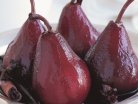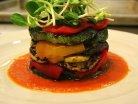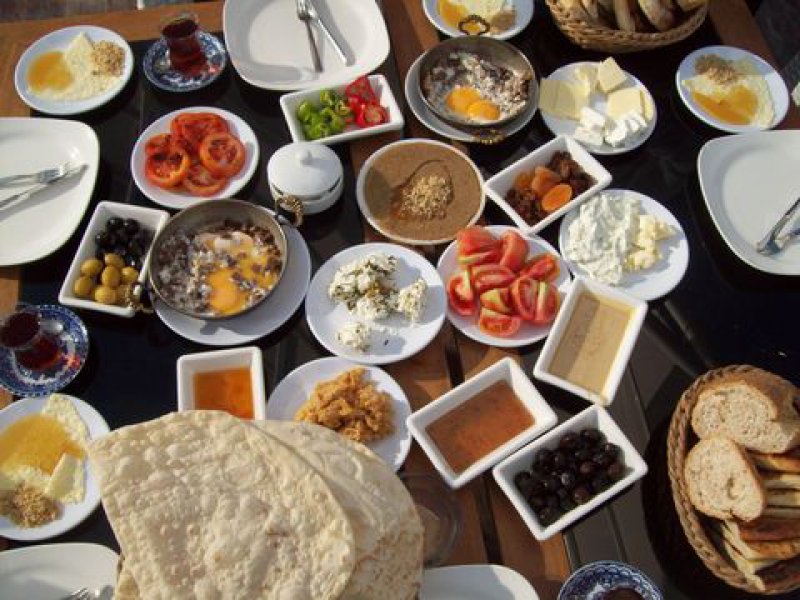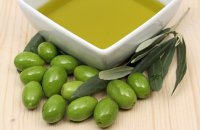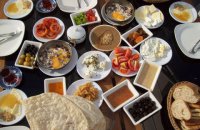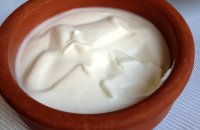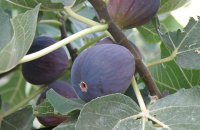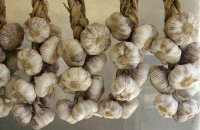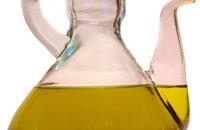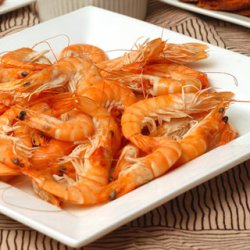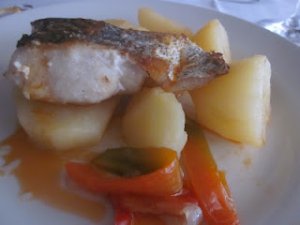Spanish Cuisine: A regional affair
Spanish cuisine is still very much a regional affair, although you will find the same staple ingredients in all Spanish kitchens: olive oil, flat-leafed parsley, garlic, onions, tomatoes, lemons and wine. Another common thread within Spanish cooking is the prevalence of seafood. From the fish displayed in the markets of the coastal areas to those in the supermarkets of land-locked Madrid, the variety is truly phenomenal. Bordered by the Atlantic, the Mediterranean, and the Bay of Biscay, the Spaniards are among the world’s biggest fish eaters. But seafood is only the beginning...
The central east region of Valencia and its southern neighbor Murcia –traditionally known as Levante- is the Land of Rice and Orange Blossom. Its landscape is dotted with "planteles," or mud-walled rice plots, and "huertas," the lush vegetable gardens with their ingenious irrigation systems, first established by the Moors. The food here reflects these regional riches, although the main meal usually contains some form of rice. The "arroz en caldero," rice cooked in a blended fish stock and flavored with saffron, is one particular crowd pleaser. Oranges are also a regular feature of a Levantine meal –either combined with other fruits and vegetables in salads, eaten as desserts (sometimes with whipped cream), or squeezed to make an orange sauce for both fish and meat dishes.
Andalusia, in the south, has made several notable contributions to international cuisine such as the liquid-gold sherry wines and the cold salad-soup "gazpacho." The region is considered to be the "frying pan" of Spain not only because summer temperatures often reach mid 40s centigrade (around 110 F), but also because its cooks have traditionally preferred frying to any other means of cooking. Although a simple plate of mixed fried fish has been a regional delicacy for centuries, the increasing numbers of calorie-conscious men and women have started to impact the region’s culinary scene. As a result, the region has seen a dramatic increase in grilling as the means of preparing food.
In the west, bordering Portugal, lies Extremadura. This region is known to produce the country’s best "embutidos" (sausages), most notably the red sausage known as chorizo. With its abundance of rabbit, hare, partridge and quail, Extremadura is the most popular area for hunting within all of Spain. The area’s great epicurean treat, perhaps due primarily to its rarity these days, is the jabali, or wild boar.
The central plateau region –that arid plain known as the Land of Saints and Heroes, which encompasses Old and New Castile- is renowned for its meat dishes. Particularly famous are the baby lamb and suckling pig of Segovia, as well as the roast and grilled veal of Avila.
Bean and chickpea stews are popular across the whole of Spain, yet each region has its own version. An example of this is the well-known "cocido madrileno," the hearty Madrid-style chickpea stew –a descendant of the "olla podrida,” or rotten pot, mentioned in Don Quixote. But it is the damp, rugged, cider-producing region of Asturias in the north west, with its high mountains and harsh winter climate, that has bequeathed the most substantial of all the country’s sturdy bean stews: the famous "fabada asturiana."
Galicia, in the extreme northwest (so extreme, in fact, that before the discovery of the New World, Galicia was known as “Finisterre,” or the land’s end), also has its own robust stew called "pote gallego." However, Galicia’s glory is to be found in its "rias,” a geological marvel of fjord-like inlets, whereby valleys have been hollowed out of the land and invaded by the ocean. The rias make Galicia a fish-and-seafood paradise, but, in particular, the region prides itself on the quality of its shellfish dishes. Among the most renowned shellfish are the "nécoras," or small orange crabs, and the "percebes," or goose barnacles, both of which are unique to that coast.
Catalonia, in the northeast, with its sea and mountains, is a region that combines its profusion of produce in the most unexpected ways. Everything is used in the Catalonian kitchen; very little is wasted. In fact, it sometimes seems as though everything that is in season, either from the sea or the land, has been combined in one dish. The result of this can be culinary creations which resemble multi-colored mosaics like the "Zarzuela de mariscos,” literally an operetta of seafood, or the exuberantly mixed salads topped with the garlic mayonnaise called "ali-oli.”
Traveling westwards from Catalonia, we encounter Aragon, Navarre and Rioja. Nowadays, Rioja has acquired immense worldwide fame due to its smooth, full-bodied wine. Like the Rioja region, Aragon and Navarre are also watered by the Ebro Valley area. The Aragonese "chilindrón" sauces –made with tomatoes, garlic, onions, cured ham, and sweet red peppers- are the most well-known of the region’s specialties. You will find meats such as lamb, rabbit, and veal cooked in "chilindrón" sauces, but the most popular dish is probably the "pollo a la chilindrón," an unbelievable chicken dish. Another feature of the Aragonese sauces is their use of melted dark chocolate in dishes such as "pichones estofados" (braised pigeon or squab in chocolate sauce). Moreover, Navarre is the fisherman’s dream, as the rivers and streams of its mountain valleys are home to some of the most succulent trout found anywhere in the world. Hence, the "truchas a la navarra" (baked trout, stuffed with Serrano ham) is the one region’s specialties.
With its truly exceptional regional cooking, the Basque country is widely regraded as home to the best cuisine in all the land. Here, food is generally uncomplicated, with subtlety, texture, flavor and freshness being the cuisine’s most important requirements. Any dish which bears the label a "la vasca" (Basque-style) is usually well worth trying. With a wide variety gastronomic societies flourishing, this northern region boasts some of the finest restaurants in Spain.
Spanish Cuisine: A late affair
Meal times are much later in Spain than in many other parts of Europe, and they are often even later in the south of Spain than in the north. This is certainly one of the first things that strikes visitors, especially those from Nordic countries, who are used to lunching around 1:00 p.m. and dining at 7:00 p.m.
Lunch in Spain is a very relaxed, almost ceremonial, affair- something to be shared with family and friends. For most Spaniards, the idea of munching a sandwich alone at your desk, or in a cafeteria while staring blankly into space, strikes them with horror. Such modern-day scourges are resisted in Spain, where lunch is either eaten leisurely at home, shared with companions, or eaten in the familiar surroundings of a friendly restaurant.
Tea time (merienda) is at approximately 6:30 p.m, while dinner, which is normally a light meal, is usually around 10:00 p.m. or even later, especially in the summers. The interval between the usual light breakfast of toast or rolls and coffee at about 8:00 in the morning and lunch, around 2:30 – 3:00 p.m., is some seven to eight hours. No wonder the Spanish invented "tapas," the little dishes of appetizers or snacks found in bars nationwide which fill-in between meal times. But the early evening tapas serve not only as pleasant appetizers; Spaniards, as a rule, do not like to drink alcohol without eating something at the same time to line the stomach. At most social gatherings, the tapas are as important as the drinks, if not more so.
Spanish Cuisine, A Regional Affair and A Late Affair
Within the great beauty and diversity of the Spanish culture, there exist myriad traditions, customs, and, of course, recipes.
Country:
Category:
































